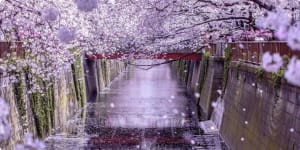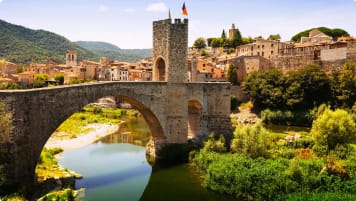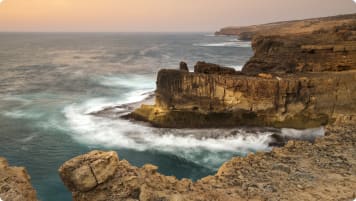Japan Odyssey - Small Group Tours for Mature Travellers
Through this small group program, we explore Japan's rich history, from ancient times to the development of religions like Buddhism and Shintoism. We delve into the philosophy of its people by visiting world-renowned temples, shrines, and old towns steeped in ancient legends of Samurai and more. Together we, as mature and senior couples or solo travellers, will share some traditions which the Japanese have inherited. A variety of sites including UNESCO World Heritage sites, has been chosen for this tour, all filled with clues such as Hanami or forest bathing to understand the essence of Japan.
From $17,541NZD
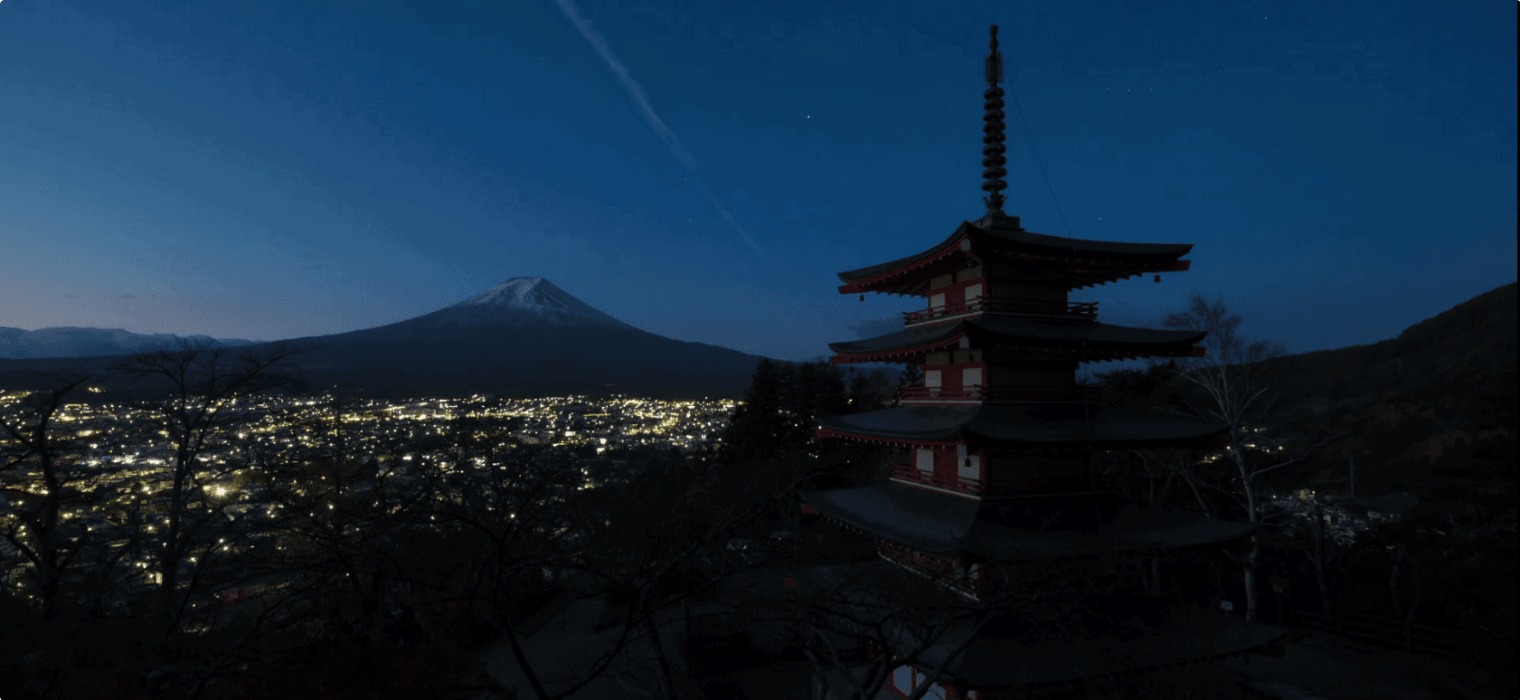
Highlights
- 1. Discover the icons of Kyoto including the Golden Pavilion and the Heian-Jingu Shrine.
- 2. Tour Hiroshima and the monuments of the Peace Memorial Park.
- 3. A trip to Nara, where we will see the deer of Nara park, the Todaiji Temple, and Kasuga Taishi Shrine.
- 4. A full day tour of Tokyo, including a visit to the Imperial Palace and Tokyo Tower.

Departure Dates
| Departure Date | Price |
|---|---|
| 01 September 2025 Ends 12 September 2025 • 12 days $17,541 Twin $19,707 Single Pre-guaranteed | Selected |
| 16 March 2026 Ends 27 March 2026 • 12 days $17,541 $16,783 Twin $19,707 $18,949 Single Save up to $700Early Bird | |
| 07 September 2026 Ends 18 September 2026 • 12 days $17,541 Twin $19,707 Single Available | |
| 15 March 2027 Ends 26 March 2027 • 12 days $17,541 Twin $19,707 Single Available | |
| 06 September 2027 Ends 17 September 2027 • 12 days $17,541 Twin $19,707 Single Available |
Escorted Small Group Tour Japan
Odyssey offers easy, convenient, and relaxed escorted small group tours across Japan. We explore Japan's fairy-tale natural beauty, its ancient history, and Imperial heritage, its World Heritage Sites, and world famous cities, all with some truly spectacular scenery along the way. This and more is all waiting to be explored on one of Odyssey’s small group tours of Japan, designed for the senior traveller, and led by experienced, and enthusiastic like minded people.
Odyssey Traveller's escorted small group tour Japan are small group tour packages that will take you from Japan 's imperial city of Kyoto to the neon-lit capital of Tokyo , tracing more than 2,000 years of history and culture of the Land of the Rising Sun with a knowledgable tour leader. The first departure each year of this Japan tour is timed to allow the traveller whether a couple or single traveller to visit Japan during Hanami or Cherry blossom season.
Japan now has the world's third largest economy following the country's remarkable post-war expansion, and the Japaneseenjoy the highest life expectancy in the world (81 years for men and 87 years for women, as of 2018). A modern, highly industrialised country, Japan is still heavily influenced by the legends and myths from its imperial history, to Shoguns , as can be seen in its art, architecture, literature, and traditions.
On this Japan Odyssey escorted tour, we will be led by our English-speaking guides as we learn about Shintoism and Buddhism, visit ancient temples and new, shinto shrine and other UNESCO World Heritage Sites, admire the country's natural scenery, understand the concept of forest bathing on spiritual well being and immerse ourselves in the cultural experience including Japanese cuisine that define Japanese culture on a guided tour of Japan.
Small Group Tour Japan Itinerary
Experience Traditional Japan in Kyoto
Kyoto, the "thousand-year capital", is synonymous with traditional Japan, evoking images of ancient temples, Shinto shrine(s), geishas in kimonos, the quiet tea ceremony, cherry blossom season , and Zen gardens. Originally named Heian-kyo ("capital of peace and tranquility"), Kyoto became the seat of the imperial court beginning in the year 794 until 1869, when the capital moved to Edo (modern-day Tokyo ). Heian-kyo was renamed Kyoto (simply, "capital city") in the 11th century, and retained a lot of its traditional architecture as it was spared from bombings during World War II.
It is also in Kyoto where Japan formed its identity, veering away from more than a century of Chinese influence and fixation on China's Tang Dynasty. Here they developed their phonetic script distinct from Chinese characters, compiled their own poetic forms, and developed uniquely Japanese themes in their paintings.
While Kyoto (birthplace of videogame powerhouse, Nintendo) has certainly embraced the future, walking through certain parts of the city still feels like stepping into old Japan. On our sightseeing tour, we will visit numerous ancient temples of Buddhists and shrines. Ryoanji Temple and its famous rock garden used to be an aristocrat's villa that was converted into a Zen temple in 1450. This Buddhist temple now belongs to the Myoshin-ji school of the Rinzai sect of Zen Buddhism. Its rock garden is a fine example of kare-sansui ("dry landscape") a Japanese garden design which features rock formations arranged on raked smooth pebbles to facilitate meditation.
We will also visit Kinkakuji Temple, also known as the Golden Pavilion as the structure's top two floors are completely covered in gold leaf. This ancient temple overlooking a pond used to be the retirement villa of the shogun Ashikaga Yoshimitsu.
From there we move to Nara , the capital of Japan from 710 to 784. In Nara , we will visit the stunning Todaiji Templeand the beautiful Kasuga Taisha Shrine. We will also spend time in Nara Park with its hundreds of free-roaming deer. If time allows, we will have the opportunity to participate in an authentic Japanese tea ceremony.
Peace and Sacred Scenery in Hiroshima
Moving southwest from Kyoto, we enter Hiroshima, a major urban centre in the 1870s during Japan's imperial period, and a city destroyed in an instant in August 1945 with the dropping of the atomic bomb during World War II. Hiroshima made an impressive recovery after the war, and is now home to more than two million people.
We will travel from Kyoto to Hiroshima by train, visiting the Hiroshima Peace Memorial Museum, erected in remembrance of the devastation and the lives lost in the bomb attack. The adjacent Peace Park, built near the hypocentre of the blast, is dedicated to the hope of a lasting peace. The moving "Statue of Mother and Child in the Storm" created by sculptor Hongo Shin stands along Peace Boulevard, depicting a mother cradling an infant and lifting another child clinging to her back, expressing the city's continued advocacy for the total abolition of nuclear weapons. The Peace Park was built around the bombed ruins of the Hiroshima Prefectural Industrial Promotion Hall, which is now known as the Genbaku (A-Bomb) Dome and left untouched to serve as a memorial.
We then visit the island of Miyajima ("Shrine Island") less than an hour off the coast of Hiroshima. Miyajima's real name is Itsukushima, which Buddhist monk Kobo Daishi (Kukai) established as an ascetic site for the Shingon sect of Buddhism in the 8th Century. In 1643, a Confucian scholar, Shunsai Hayashi, travelled around Japan on foot and called Miyajima one of the "Three Most Scenic Spots in Japan". His high praise remains accurate. Miyajima is famous for the UNESCO World Heritage site of Itsukushima-jinja, featuring the red torii (shrine gate) which at high tide seems to float on the water.
Our trip to Hiroshima also includes a guided sightseeing tour, by private car, that takes us to Shukkei-en Garden ("shrunken-scenery garden"), a garden replicating the traditional aesthetics of Japanese garden design in miniature, and the magnificent Hiroshima Castle.
The Castle Town of Matsue
From Hiroshima we travel north to Matsue, also known as the "City of Water" as it is near the Sea of Japan, sitting between Lakes Shinji and Nakaumi.
Matsue is a castle town crossed by many canals and has one of the twelve remaining original castles in Japan. As Matsue is a former feudal stronghold, its buildings and layout reflect its history. We will visit the Adachi Art Museum and gardens to gain an understanding of the art of Japan. For its creator businessman, Adachi Zenko, the Adachi is about finding and appreciating beauty through art, as seen through the tranquillity of the garden or the painted world of the Japanese artist.
The Mountain Resort of Hakone
After Matsue we take a short flight to Haneda, to make a trip to the mountain resort of Hakone, famous for its hot springs resorts (onsen) and breathtaking views of Japan's iconic volcano, Mount Fuji. We spend the day in the Hakone National Park, and at the end of the day there is the opportunity to enjoy a traditional spa package in the hot springs.
This Japan Tour closes with Tokyo
Tokyo is Japan's capital and one of the world's most populous cities. It has been the seat of the Emperor of Japan since 1869 following the Meiji Restoration, and is a bustling centre of fashion, entertainment, gastronomy, and culture. When we first arrive in Tokyo, we have a full day of sightseeing followed by two free days which you can use at your leisure to explore the city. The metro is accommodating for people of all ages, and the signs are in English and Japanese. The diversity of places to visit and experience can easily fill the last two days of this Japan tour package. Your Odyssey program leader and local tour guide(s) will assist you if you need help with planning these last two days. Finally, we come together for a farewell dinner to conclude our small group tour Japan.
All our Japan group tour(s) include an English-speaking guide to introduce you to the rich heritage of this incredible nation as you discover Japan. Odyssey Traveller's tours of Japan remain very popular. Odyssey has an article with tips about travelling in Japan .
You can learn more about Japan with our country profile where all other tour departures are listed as well. For more details about our guided tour Exploring Japan, click the 'Top 5' or 'Itinerary' buttons above! If you’re keen to experience this tour, please call or send an email. Or, to book, simply fill in the form on the right hand side of this page.
Articles about Japan from Odyssey.
The following list of articles are published by Odyssey Traveller to maximise the senior travellers' knowledge and enjoyment of Japan when visiting:
- A history of Japan
- Astro boy
- A history of Tokyo
- Shoguns of Japan
- Around the world in six coffees
- Forest bathing in Japan
- Celebrating the Cherry Blossom; Hanami
- Travel tips for travellers to Japan
- Ten of the best books on Japan
External articles of interest about Japan for the traveller.
The following list of articles are or are carefully selected external source to maximise senior travellers' knowledge and enjoyment of Japan when visiting:
Gallery
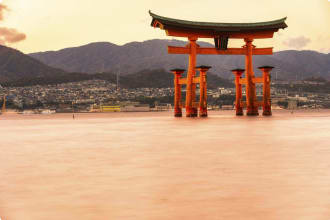
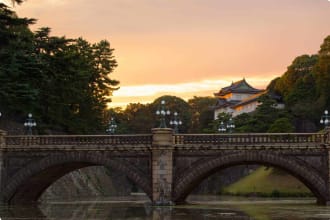
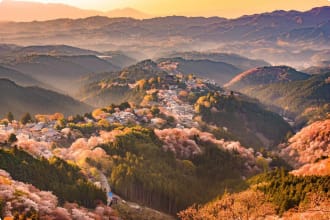
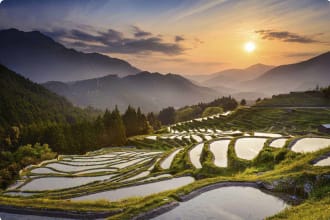
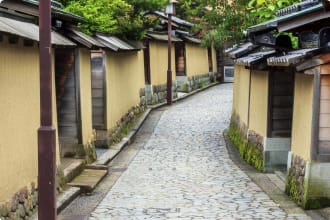
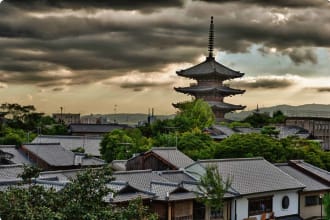
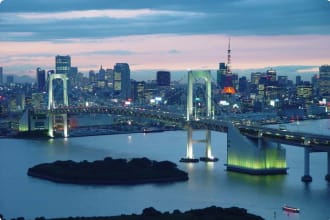
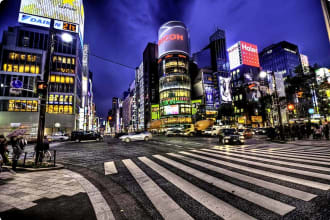
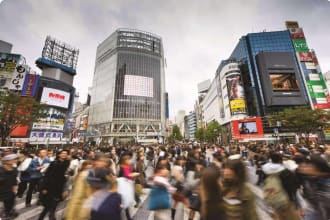
Itinerary
12 days
Day 1-3: Kyoto
Accommodation: 3 nights at New Miyako Hotel or similar
The first day of our small group tour Japan will begin in central Japan in the city of Kyoto with a welcome dinner. For those flying into Osaka, we recommend a coach transfer from Osaka to Kyoto. Odyssey welcomes the opportunity to provide recommendations for transfer arrangements to Kyoto upon request.
The ancient city of Kyoto was the home of the Emperor for 11 centuries over 1,200 years ago. Numerous temples and shrines of poignant historical beauty in Kyoto display the refined architecture of Japan. Kyoto’s legacy of aristocratic art and culture makes Kyoto unique among other cities of Japan. A “heartland” for many Japanese people, Kyoto is the place to encounter the finest essence of traditional Japan.
On our second day in Japan, we will enjoy a sightseeing tour by private car. This includes visits to some beautiful traditional temples, among them the Ryoanji temple, home of a picturesque and famous rock garden, and Kinkakuji Temple, the top two floors of which are covered in gold leaf.
Day three includes a sightseeing tour of Nara, where we visit the stunning Todaiji Temple and the beautiful Kasuga Taisha Shrine. Along with these exquisite buildings, we spend time at Nara park, a favourite spot in the prefecture populated by hundreds of free-roaming deer.
If time allows while in Kyoto, the group will have the opportunity to participate in an authentic tea ceremony.
Day 4-6: Hiroshima
Accommodation: 3 nights at Hiroshima Oriental Hotel or similar
On the fourth day, after breakfast in Kyoto, we catch a Nozomi train to Hiroshima.
During our stay in Hiroshima, the group will visit Hiroshima Peace Memorial (Genbaku Dome), which memorialises the devastation and lives lost in the atomic attack the city suffered in World War II. Peace Memorial Park, which is laid out near the hypocenter of the attack, is dedicated to peace. Here we’ll learn about Hiroshima’s recovery and growth to become a city with a population of 1.2 million citizens.
We then travel by local train and ferry to visit the sacred island of Miyajima, where roaming deer will welcome us. Miyajima, which means “Shrine Island,” has been worshiped since ancient times. The main entrance to the floating shrine building takes the form of a huge Torii gate floating on the sea. This forested island is well-known to the Japanese as one of the Scenic Trio of Japan.
Our visit to Hiroshima also includes a guided sightseeing tour, by private car, that takes us to Shukkei-en Garden (a garden replicating grand scenery in miniature), and the magnificent Hiroshima Castle.
Day 7: Matsue
Accommodation: 1 night at Matsue Excel Hotel Tokyu or similar
On the seventh day we travel from Hiroshima to Matsue.
Matsue, which prospered under the feudal lords in the Edo period (1603-1868), is spotted with traditional Samurai houses. Matsue Castle sits like a tower in the center of a network of waterways including the lake. During the afternoon, we experience the beautifully landscaped garden and carefully curated art collection at the Adachi Museum. We also visit nearby Izumo, a town steeped in legend and myth about the founding of Japan. We will learn about the ancient Izumo Taisha shrine, which enshrines the Kami, the deity of Izumo.
Note: Our luggage will be transported directly to our Tokyo hotel. You will need to arrange an overnight bag to cater for our two nights (Matsue and Hakone) before our arrival in Tokyo.
Day 8: Hakone
Accommodation: 1 night at Yumoto Fujiya Hotel or similar
We fly from Izumo Airport to Haneda, and from there we will take a transfer to the foot of Mt Fuji.
From Mt Fuji, we have the opportunity to see the hot springs of Owakudani, the “valley of great boiling.” Hakone is a mountainous resort within the Fuji volcanic chain, and was designated as a National Park in 1938. Soaking in hot springs is a well-loved activity in Japan, and visitors can experience the hot springs in Hakone while enjoying the view of Mt. Fuji, which is considered to be the most beautiful and sacred mountain in Japan. From the hot springs, we will also enjoy the view of Lake Ashi, which is a typical caldera lake formed between the outer crater ridge and inner volcanoes.
We will return to the our hotel in Hakone to enjoy dinner.
Day 9-11: Tokyo
Accommodation: 3 nights at Hotel Unizo Tokyo or similar
On the ninth day, we travel to Tokyo to for a full sightseeing day.
The capital of Tokyo is the centre of population, politics, finance, and culture in Japan. Approximately 12 million people reside within Tokyo, and almost one-fourth of Japan’s total population lives within commuting distance of the city. Historically, Tokyo was the centre of the feudal government of the Tokugawa Shogunate. Popular Japanese traditions such as Kabuki, Sumo wrestling, and ukiyo-e woodblock prints became popular and flourished in ancient Tokyo.
On a guided tour of Tokyo, we will see the iconic Tokyo Tower and the Imperial Palace, the Emperor’s residence, as well as having the opportunity to visit the buzzing Nakamise shopping street.
You will have days 10 and 11 of the tour free to explore Tokyo at your leisure, and your Odyssey program leader can show you some of the sights of this amazing city. On the final evening, the group will enjoy a farewell dinner.
Day 12: Tokyo
Our tour will end in Tokyo after breakfast.
Tour Notes
- Itineraries may change if flight schedules, site availability, and other inclusions have to be amended prior to departure.
- Group size is limited to 18.
- On Day 7 our luggage is transported to our Tokyo hotel, therefore you will need an overnight bag for the the two (2) nights spent in Matsue and Hakone.
Includes / Excludes
What’s included in our Tour
- 10 nights of accommodation.
- Daily Japanese and/or Western buffet style breakfasts and 3 dinners.
- 1 internal flight and taxes.
- Shinkansen (Bullet Train) from Kyoto to Okayama, Okayama to Hiroshima.
- Transport and field trips as indicated.
- Applicable entry fees and services of local guides.
- Touring by comfortable and modern coach (short distance transfers may include be by taxi).
- Gratuities and service charges.
- Detailed preparatory material.
- Services of a tour leader and translator/guide.
What’s not included in our Tour
- Comprehensive travel insurance.
- International airfares and taxes.
- Items of a personal nature, such as telephone calls and laundry.
- Optional activities that are suggested during free time, such as Kabuki theatre.
Participants must be able to carry their own luggage, climb and descend stairs, be in good health, mobile and able to participate in 3-5 hours of physical activity per day, the equivalent of walking / hiking up to 8 kilometers per day on uneven ground.
Book now
Make it a private tour
Easing your journey
Crossing international borders with restrictions
The list of requirements to travel internationally has changed and will continue to change for several years. Odyssey is here to assist you in managing your way through these requirements:
For more information see our Crossing international borders with restrictions page.
Book With Confidence
If less than 30 days before your tour starts you are unable to travel as a result of Government travel restrictions, Odyssey Traveller will assist you with a date change, provide you with a credit or process a refund for your booking less any non-recoverable costs.
See Terms and conditions for details.
Peace of Mind Travel
The safety of our travellers, tour leader, local guide and support staff has always been our top priority and with the new guidelines for public health and safety for keeping safe for destinations around the world, we’ve developed our plan to give you peace of mind when travelling with us.
See Peace of Mind Travel for details.
Reviews
This tour exceeded my expectations in learning about the history and culture of Japan. We experienced many things you hear about such as riding on the bullet train, seeing the cherry blossom in full bloom, seeing Mt Fuji, going to the Peace Park in Hiroshima, wearing kimonos and visiting an onsen if you wish. The wonderful gardens, temples and shrines add a sense of peace. The friendliness of the locals made this a very enjoyable experience. Participant March 2018
All of the accommodation was superior to that we have experienced on previous Odyssey trips. Hotels were located in easily accessible areas. Participant March 2018
The tour program worked particularly as we had a small group that allowed some flexibility for the Program Leader, Stephan De Roeck. As Stephen had previously lived in Japan he was quite aware of the Japanese traditions and ways to connect with their culture. This gave us a great experience and we felt a closer relationship with Japan and it's people as a result. Participant March 2018
Reading List Download PDF
A Geek in Japan: Discovering the Land of Manga, Anime, Zen, and the Tea Ceremony
Hector Garcia
For every fan of manga, anime, J-pop, or Zen, A Geek in Japan is a hip, smart and concise guide to the land that is their source.
Comprehensive and well informed, it covers a wide array of topics in short articles accompanied by sidebars and numerous photographs, providing a lively digest of the society and culture of Japan. Designed to appeal to the generations of Westerners who grew up on Pokemon, manga and video games, A Geek in Japan reinvents the culture guide for readers in the Internet age.
Spotlighting the originality and creativity of the Japanese, debunking myths about them, and answering nagging questions like why they're so fond of robots, author Hector Garcia has created the perfect book for the growing ranks of Japanophiles in this inspired, insightful and highly informative guide.
Modern Japan: A Very Short Introduction (Very Short Introductions)
Christopher Goto-Jones
Japan is arguably today's most successful industrial economy, combining almost unprecedented affluence with social stability and apparent harmony. Japanese goods and cultural products are consumed all over the world, ranging from animated movies and computer games all the way through to cars, semiconductors, and management techniques. In many ways, Japan is an icon of the modern world, and yet it remains something of an enigma to many, who see it as a confusing
montage of the alien and the familiar, the ancient and modern. The aim of this Very Short Introduction is to explode the myths and explore the reality of modern Japan - by taking a concise look at its history, economy, politics, and culture.
Bending Adversity: Japan and the Art of Survival
David Pilling
A pacy, fresh and surprising portrait of Japan and the Japanese - from David Pilling, award-winning writer and Asia Editor of the Financial Times
Despite years of stagnation, Japan remains one of the world's largest economies and a country which exerts a remarkable cultural fascination. David Pilling's new book is an entertaining, deeply knowledgeable and surprising analysis of a group of islands which have shown great resilience, both in the face of financial distress and when confronted with the overwhelming disaster of the 2011 earthquake.
The resulting tsunami, which killed some 19,000 people, and nuclear catastrophe highlighted both the deeply impressive practical resilience of ordinary Japanese and a political culture of extraordinary carelessness and arrogance. Pilling describes the emergency and its aftermath, but then writes far more broadly about many aspects of Japan which are little known to outsiders and which do so much to explain these contradictory responses to the earthquake. Bending Adversity is a superb work of reportage and the essential book even for those who already feel they know the country well.
For Fukui's Sake: Two years in rural Japan
Sam Baldwin
Far from the high-tech, high-rise of the super-cities, there lies another Japan.
A Japan where snakes slither down school corridors, where bears prowl dark forests and where Westerners are still regarded as curious creatures. Welcome to the world of the inaka – the Japanese countryside.
Unhappily employed in the UK, Sam Baldwin decides to make a big change. Saying sayonara to laboratory life, he takes a job as an English teacher in a small, rural Japanese town that no one – the Japanese included – has ever heard of.
Arriving in Fukui, where there’s ‘little reason to linger’ according to the guidebook, at first he wonders why he left England. But as he slowly settles in to his unfamiliar new home, Sam befriends a colourful cast of locals and begins to discover the secrets of this little known region.
Helped by headmasters, housewives and Himalayan mountain climbers, he immerses himself in a Japan still clutching its pastoral past and uncovers a landscape of lonely lakes, rice fields and lush mountain forests. Joining a master drummer’s taiko class, skiing over paddies and learning how to sharpen samurai swords, along the way Sam encounters farmers, fishermen and foreigners behaving badly.
Exploring Japan’s culture and cuisine, as well as its wild places and wildlife, For Fukui’s Sake is an adventurous, humorous and sometimes poignant insight into the frustrations and fascinations that face an outsider living in small town, backcountry Japan.
A Concise History of Japan (Cambridge Concise Histories)
Brett L. Walker
To this day, Japan's modern ascendancy challenges many assumptions about world history, particularly theories regarding the rise of the west and why the modern world looks the way it does. In this engaging new history, Brett L. Walker tackles key themes regarding Japan's relationships with its minorities, state and economic development, and the uses of science and medicine. The book begins by tracing the country's early history through archaeological remains, before proceeding to explore life in the imperial court, the rise of the samurai, civil conflict, encounters with Europe, and the advent of modernity and empire. Integrating the pageantry of a unique nation's history with today's environmental concerns, Walker's vibrant and accessible new narrative then follows Japan's ascension from the ashes of World War II into the thriving nation of today. It is a history for our times, posing important questions regarding how we should situate a nation's history in an age of environmental and climatological uncertainties.
An Introduction to Japanese Society
Yoshio Sugimoto
Now in its fourth edition, An Introduction to Japanese Society remains essential reading for students of Japanese society. Internationally renowned scholar Yoshio Sugimoto uses both English and Japanese sources to update and expand upon his original narrative in this sophisticated yet highly readable text. This book explores the breadth and diversity of Japanese society, with chapters covering class, geographical and generational variation, work, education, gender, minorities, popular culture and the establishment. Updates include an exploration of the 'Cool Japan' phenomenon and the explosion of Japanese culture overseas. This edition also features the latest research into Japanese society, updated statistical data, and coverage of recent events including the 2011 earthquake and tsunami, and the change in government. Written in a clear and engaging style, An Introduction to Japanese Society provides an insight into all aspects of a diverse and ever-evolving contemporary Japan.
Lost Japan
Alex Kerr
An enchanting and fascinating insight into Japanese landscape, culture, history and future.
Originally written in Japanese, this passionate, vividly personal book draws on the author's experiences in Japan over thirty years. Alex Kerr brings to life the ritualized world of Kabuki, retraces his initiation into Tokyo's boardrooms during the heady Bubble Years, and tells the story of the hidden valley that became his home.
But the book is not just a love letter. Haunted throughout by nostalgia for the Japan of old, Kerr's book is part paean to that great country and culture, part epitaph in the face of contemporary Japan's environmental and cultural destruction.
Winner of Japan's 1994 Shincho Gakugei Literature Prize.
Alex Kerr is an American writer, antiques collector and Japanologist. Lost Japan is his most famous work. He was the first foreigner to be awarded the Shincho Gakugei Literature Prize for the best work of non-fiction published in Japan.
Japan: The Story of a Nation
Reischauer, Edwin
One of two texts which introduce East Asian history, both have been rewritten to take account of the changes in China since Mao's death, of Japan's economic success, and of the emergence of Taiwan, South Korea and Singapore as important political and economic powers. They aim to combine authoritative scholarship with comprehensive coverage and a succinct, readable style and are aimed at undergraduate students and the general reader. Japan is a land of modest geographic size, but it is one of the larger countries of the world by population and today is the world's economic powerhouse. Though in culture it is a daughter of ancient China, Japan has developed one of the most distinctive cultures in the world. This makes Japan a subject of great interest, but the unique course of Japanese history has made it of even greater significance. Despite its East Asian cultural origins, Japan evolved along a very different course to its neighbours; subsequently it became the only non-Western land to respond successfully to the challenge of superior Western technology in the nineteenth century and today it has become a leading nation of the so-called First World. As the only non-Western member of the this grouping of nations, Japan stands in a very special relationship to the other industrialised lands. Its success in negotiating this vast change and the great economic power this has produced are matters of importance to both groups of nations. Even more significant is the fact that Japan, in industriualising and in "modernising" its institutions, has preserved a sharp self-identity and a considerable part of its traditional, pre-modern culture, despite the tidal wave of Western influences that has inundated it in modern times. These survivals from its past civilization give Japan an unusual cultural richness and seem to contribute special strengths as well as difficulties to its handling of the problems of modern urban society. This revised edition gives special attention to Japan's economic success and the problems resulting from that success. "The authors have worked together on the study of East Asia for many years as part of a remarkable team at Harvard University. Edwin O. Reischauer was US Ambassador to Japan and is a leading western authority on Japan, while Albert M. Craig is Professor of History at Harvard.".
Memoirs of a Geisha
Arthur Golden
A literary sensation and runaway bestseller, this brilliant debut novel tells with seamless authenticity and exquisite lyricism the true confessions of one of Japan's most celebrated geisha.
Speaking to us with the wisdom of age and in a voice at once haunting and startlingly immediate, Nitta Sayuri tells the story of her life as a geisha. It begins in a poor fishing village in 1929, when, as a nine-year-old girl with unusual blue-gray eyes, she is taken from her home and sold into slavery to a renowned geisha house. We witness her transformation as she learns the rigorous arts of the geisha: dance and music; wearing kimono, elaborate makeup, and hair; pouring sake to reveal just a touch of inner wrist; competing with a jealous rival for men's solicitude and the money that goes with it.In Memoirs of a Geisha, we enter a world where appearances are paramount; where a girl's virginity is auctioned to the highest bidder; where women are trained to beguile the most powerful men; and where love is scorned as illusion. It is a unique and triumphant work of fiction—at once romantic, erotic, suspenseful—and completely unforgettable.
The Tale of Genji
Murasaki Shikibu
Written in the eleventh century, this exquisite portrait of courtly life in medieval Japan is widely celebrated as the world’s first novel. But The Tale of Genji is no mere artifact. It is, rather, a lively and astonishingly nuanced portrait of a refined society where every dalliance is an act of political consequence, a play of characters whose inner lives are as rich and changeable as those imagined by Proust. Chief of these is "the shining Genji," the son of the emperor and a man whose passionate impulses create great turmoil in his world and very nearly destroy him. His tempestuous nature, family circumstances, love affairs, alliances, and shifting political fortunes form the core of this magnificent epic.
